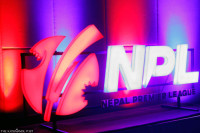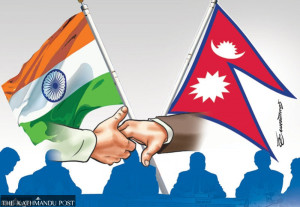Columns
Why ‘big merger’ faces a big hurdle
Relatively large ownership by a single entity is a potential roadblock to mergers and acquisitions.
Paban Raj Pandey
Talks of mergers and acquisitions among Nepali banks has been on the rise in recent weeks. The latest Monetary Policy lays down measures meant to encourage banks to merge. By mid-July next year, commercial banks are required to maintain an average interest rate spread (the difference between rates on loans and deposits) of 4.4 percent from the current 4.5 percent; banks that complete mergers and acquisitions by that time will get a one-year extension. Also, by mid-July next year, commercial banks are required to float at least 25 percent of their paid-up capital in debentures; banks that decide to tie the knot by that deadline will get a one-year reprieve. A merged bank also does not have to seek Nepal Rastra Bank's approval to open new branches. Currently, the board of directors, CEOs and deputy CEOs are required to abide by a cooling-off period of six months during which they cannot join another bank. This restriction will not apply to executives of a merged bank.
The argument for mergers and acquisitions goes something like this. There are just too many banks and financial institutions in Nepal. As of mid-June, there were 28 commercial banks (Class A), 32 development banks (Class B), 24 finance companies (Class C) and 91 micro-credit companies (Class D). Conceivably, larger banks should be able to fund large infrastructure projects individually. The existence of larger Nepali banks could also make it easier for them to branch into India. Bigger Nepali banks will be able to compete with foreign banks better on Nepali soil. These are all valid reasons. But how many is too many?
Short history
The history of competitive Nepali banking is brief. Formal banking began 80 years ago when Nepal Bank Limited was established in 1937. It was not until the 1980s and 90s that private entities entered the sector. Here is the rub. Of the 28, 14 were founded this century, meaning they are less than 20 years old. In other words, a good majority of the 28 have not witnessed enough cycles.
It helps if one has been through cycles—both up and down. It is in a down cycle when the wheat gets separated from the chaff. This is the perfect time for the strong to be on the lookout for cheap assets to merge with or acquire. In Class C, for instance, 10 percent of the total loan portfolio was non-performing as of mid-June, versus 1.7 percent for Class A and 1.1 percent for Class B. Just using this metric, Class C is not faring well. However, they are nothing in size compared to their A and B peers. Acquiring Class C outfits should be a walk in the park for Class A institutions. But this will not help the commercial banks bulk up. To achieve that goal, they have to merge with each other.
In early July, Global IME Bank and Janata Bank—both Class A institutions—signed a memorandum of understanding to merge. A few days later, Citizens Bank (Class A) agreed to acquire Sahayogi Bikas Bank (Class B). Nepal Rastra Bank would love a virtuous cycle to begin. The reality, however, is a bit different. First and foremost, commercial banks are profitable. Loan demand far supersedes deposit collection. They are more than earning their cost of capital. In an environment like this, there is no urgency to consolidate through economies of scale or lower cost structures.
Big not necessarily better
Relatedly, in 2015, while announcing the 2015-16 Monetary Policy, Nepal Rastra Bank gave commercial banks two years to raise their paid-up capital from Rs2 billion to Rs8 billion, hoping this would set in motion a merger and acquisition cycle. Banks did bulk up, but by issuing rights and bonus shares. Since commercial banks now are more or less the same size, in all likelihood a new bank results from a merger of equals. This means that there is no strategic lever to push a merger or acquisition.
Of the 25 privately owned commercial banks, Nepal SBI Bank is 55 percent owned by the State Bank of India. The Standard Chartered Group owns 70.2 percent of Standard Chartered Bank Nepal. Punjab National Bank holds a 20 percent equity stake in Everest Bank. FMO of the Netherlands holds 17 percent of NMB Bank shares. Nepal Bangladesh Bank was established as a joint venture with IFIC Bank of Bangladesh, where the latter holds three of six board seats.
Relatively large ownership by a single entity is a potential roadblock to mergers and acquisitions, as more often than not such large players would like to maintain control or influence. This also applies to banks in which an individual or a family or a group of like-minded people own a significant chunk. It will be a miracle if Nabil Bank (Chaudhary Group) and Laxmi Bank (Khetan Group) merge. In the unlikely event that more banks follow in the footsteps of Global IME/Janata in the months to come, they will be fewer in number but much larger in size. In this scenario, if in due course a large bank goes belly up and the government steps in to save depositors, it is the taxpayers who will end up footing the bill. Big is not always better, particularly not if the merger and acquisition initiative is taken not to fulfil market demands but to fulfil the regulator’s wishes.
***
What do you think?
Dear reader, we’d like to hear from you. We regularly publish letters to the editor on contemporary issues or direct responses to something the Post has recently published. Please send your letters to [email protected] with "Letter to the Editor" in the subject line. Please include your name, location, and a contact address so one of our editors can reach out to you.




 7.12°C Kathmandu
7.12°C Kathmandu















